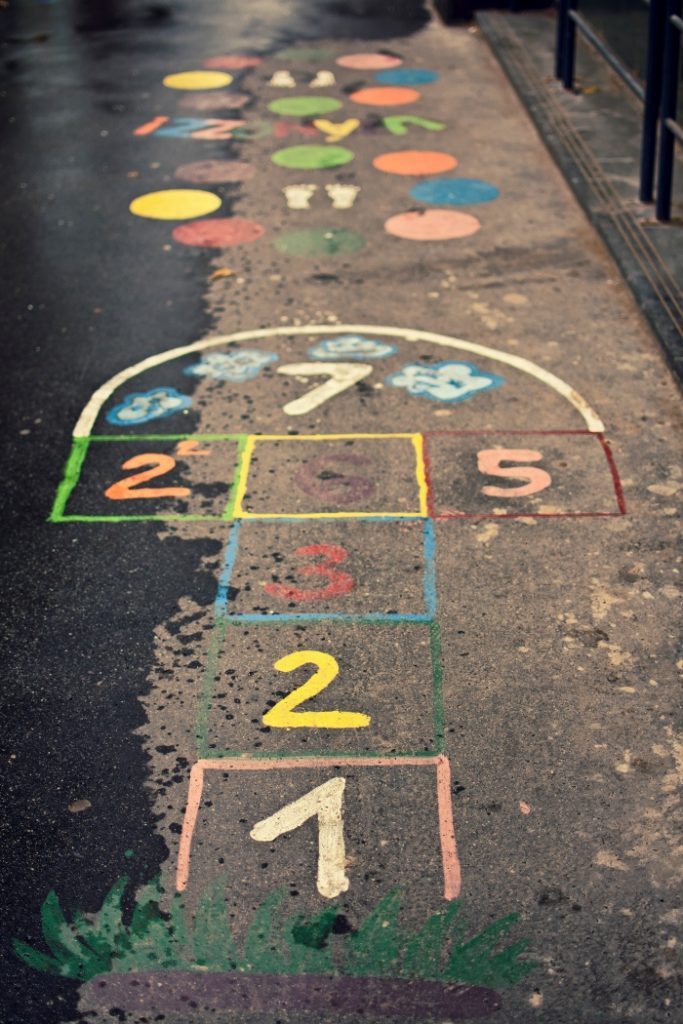Disclosure: This conversation is sponsored by the Voices for Healthy Kids, a joint initiative of the American Heart Association and Robert Wood Johnson. All opinions and ideas are 100% my own.
Have you ever looked at your child’s schedule to determine how much time they spend at recess and P.E. classes? As standard tests take the front seat, schools are being forced to cut back on the amount of time that your child spends engaging in physical education.

Has your child’s school district put physical education and recess time on the chopping block? The schools in our area have scaled back on their physical education program and kids are suffering the consequences of decreased physical activity. A majority of kids don’t get any exercise outside of school and if your child’s school has physical education on the chopping block, now is the time to speak up and voice your concerns.
With obesity on the rise, Al Baker found that many schools are eliminating physical education and time that children are spending at recess. Children who don’t play sports, don’t get the CDC’s minimum recommended 60 minutes of exercise on a weekly basis. Research proves that recess and time spend in P.E. class, can help get kids moving and help meet their daily exercise goal.

I highly suggest that you contact your child’s P.E teacher and find out if your school district has physical education and recess on the chopping block. If it is, I highly suggest that you spread the word and let other parents know about the issue firsthand. But now is the best time to stick up for your child and future generations.

Kids shouldn’t have to give up P.E. classes or recess just because educators are putting more pressure on teachers to teach kids all the materials on the test. A child needs time to step away for a bit and physical education and recess allow them to take a break. Without breaks, kids are being forced to stay in class longer, experience increased stress levels, and you can see the frustration on the kid’s faces too. As adults, sometimes we have to walk away for a bit and come back to a problem in order to figure it out. Well, kids don’t have that leisure.

I wrote and partnered with the Voices for Healthy Kids, a joint initiative of the American Heart Association and Robert Wood Johnson in 2017. While cutting physical education may seem necessary to improve test scores but the reality, it is a bad idea. My goal is to share this information and important reasons why all schools should invest in every student’s health making sure that kids have access to physical education and recess.

Exercise Keeps Your Child’s Heart Healthy
The heart has a huge job to ensure that your child’s body is adequately pumping blood through their body. But as you probably already are aware of, long-term inactivity, even as a child, can lead to a lifetime of health problems. Your child doesn’t need to go to the gym like we do to meet their daily and weekly exercise goals. Kids typically enjoy playing outside, running around the playground, riding their bike, walking home from school, and other activities throughout the day that counts as exercise.
Physical education helps introduce your child to a variety of sports, games that encourage physical activity, or they are able to spend time running around the playground. With the rising costs of team sports, only 37 percent of kids play sports outside of school. The other 63% of kids, especially those who reside in households that at or below the poverty line don’t have the opportunity to play sports.
Kids who live in households that don’t encourage exercise or can’t afford to put their child into their favorite sport, these kids desperately need physical education and recess programs at school. But as a parent, you can encourage your child to incorporate ways for their child to exercise at home too. Any additional exercise will help ensure that every child is able to meet the CDC’s recommended minimum of 60 minutes a week of physical activity. Adequate exercise helps keep your child’s heart strong and encourages them to stay healthy as they get older.
Reduces Stress
As a mom, I get that schools have to meet certain requirements but there is so much emphasis and stress put on teachers. Teachers are having to focus on teaching the kids the necessary skills needed in order to pass a standardized test. Educators forget that stressed teachers also pass the stress down to their students.
Children today are often expected to spend more time outside of class, up to 7 or more hours a week, studying and learning new material. Without physical education and recess during the school day, kids don’t have a way to release pent-up tension and relieve stress. Kids need breaks too.

Improve Their Focus
Have you ever noticed that when you don’t take a break during the day or take your vacation days on a regular basis you have trouble focusing? Kids aren’t any different and they need breaks during the day too. Yes, kids do get frequent days off from school but when they are in the classroom, they are busy learning.
Besides a small window at lunch, some kids aren’t getting enough time away from learning throughout the day and they are suffering. Having P.E. classes and recess time during the day helps break up the day so that they can focus on learning when in the classroom.
During P.E. class and recess, kids are able to burn off any excess energy so that they aren’t sitting at their desk fidgeting or unable to focus on the task at hand. Fidgeting leads to inattentiveness. Inattentiveness defeats the purpose that educators wanted to accomplish. Breaks help your child clear their thoughts and come back to the classroom ready to focus again.
Maintain Good Mental Health Habits
Many children today are spending more time playing video games, watching television, or being addicted to another screen such as a tablet or on their smartphone. Previous generations were a bit more active and spent more time playing outside with friends. Kids who spend time outdoors getting fresh air and exercise are happier.
Kids who spend more time indoors tend to suffer from depression, anxiety, or sleeping problems like insomnia. Mental health problems begin when your child stays indoors too much. Both adults and kids, need to spend time outdoors to help reset your body’s circadian “clock”. This is your body’s natural way of maintaining homeostasis. Your circadian “clock” is responsible for regulating everything from appetite and sleep schedules to mood and energy levels.
When your children go outside, they are able to reset their circadian rhythm, increase Vitamin D levels, get fresh air, and connect with nature. Being outside is not only needed to maintain homeostasis but when you get outdoors you are more likely to stay moving and exercise. Exercising or being physically active, helps release natural “feel good” hormones. These natural “feel good” hormones help ward off symptoms of mental illness. If you notice that your child is suffering from depression, anxiety, insomnia, or other mental health disorders, please consult with your child’s health care provider or a mental health facility. Untreated mental illness isn’t healthy and can increase risky behaviors, even in young children and teens.
Educators Can Teach Kids the Importance of Exercise
Physical education classes are necessary to help teach your children about the importance of getting enough exercise, eating healthy foods, and maintaining healthy habits. P.E. teachers typically introduce a wide variety of different exercises, sports, or games that encourage physical activity so that children can pick activities that they enjoy. Kids don’t have to spend time at the gym like we do and still get enough exercise to meet the daily recommended fitness goals. Encourage your children to get outdoors and get moving.
Children also learn by example. Your child’s P.E. teacher is a positive role model who can help emphasize and encourage your child to exercise at home too. Learning healthy habits at school can lead to healthy habits outside of the classroom and at home. The more your child learns about the importance of daily exercise and being forced to take an exercise class from K through 12th grade, they are more likely to continue an exercise program as a young adult.

Prevent Childhood Obesity
Childhood obesity is on the rise and the best way to prevent it is to encourage your child to exercise regularly. Children who spend countless hours sitting during school hours. Then they go home from school and spend more time sitting at home while playing video games, staring at a screen, watching television, and doing other activities that keep you tied to the couch or chair. A sedentary lifestyle puts your child at risk for obesity at an early age.
Even if P.E. class and recess time, time is limited during the day, any time that your child spends playing or exercising is better than nothing. But if schools bring back physical education programs and allow kids a recess period during the day, it will help prevent kids from being obese at a young age.
About ESSA (Every Student Succeeds Act):
- Under ESSA (the federal education law), all states must develop a comprehensive plan to ensure all students receive a fair, equitable, and high-quality education.
- We’re advocating for physical education to be included in every state’s ESSA plans. With the passage of the federal education bill at the end of 2015, 2017 presents an important opportunity to help drive awareness of the need for local and state action on PE, as State Departments of Education prepare their plans.
- Unlike previous federal education law, ESSA includes physical education (PE) and health as part of a “well-rounded curriculum” — this means that for the first time ever, health and PE have access to significant federal funding!
- But here’s the thing: the inclusion of health and PE in ESSA is not a mandate. We need to advocate for daily PE to be included as a core component in ESSA plans so that money can be accessed for PE. If PE is not included in the plan, it won’t have access to funding!

Don’t let your school district cut physical education and recess in your school district.









I agree, that would be so ridiculous if they got rid of PE and recess. Kids need time to decompress. If you take that way, it’s trouble.
My daughter has recess and gets PE 1-2 times a week, it’s on a rotating schedule. Personally, I hated PE growing up as it was not fun and focused too much on BMI numbers. I’m hoping it has changed since then.
I would hate for them to get rid of these. I think kids really need the benefits of exercise daily. I hope they never get rid of them.
Kids really need to do physical activities to keep them healthy and active. This is a really nice article to read!
Getting rid of these are really not a great idea. Kids really need these to make sure they are also physically active.
I am so agree with you. There are only benefits to have physical education in schools.
I don’t think schools should cut back on Phys Ed, and I didn’t think schools should’ve had to have cut back on creative art electives either!
It is sad to hear that schools are having to cut back. PE should definitely be a part of school curriculum!
This is such an important topic that Every school should focus on. Thanks for sharing the awareness.
Physical Education and Recess are very important for children. I allowed my girls time for both all the time during spring, summer, and winter break.
When I was in school, I would always look forward to PE and recess. I think those are the times that students could relax and have some fun time.
What will the kids do with all their energy if they take Ress and take away gym class. thanks for sharing.
All schoolwork and no play makes Jack a dull boy. 🙁 PE classes and recess are important, it’s like giving the brain a much needed rest…